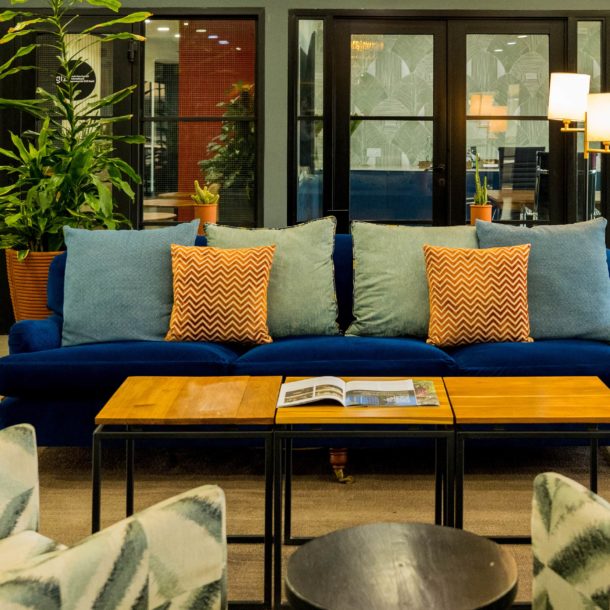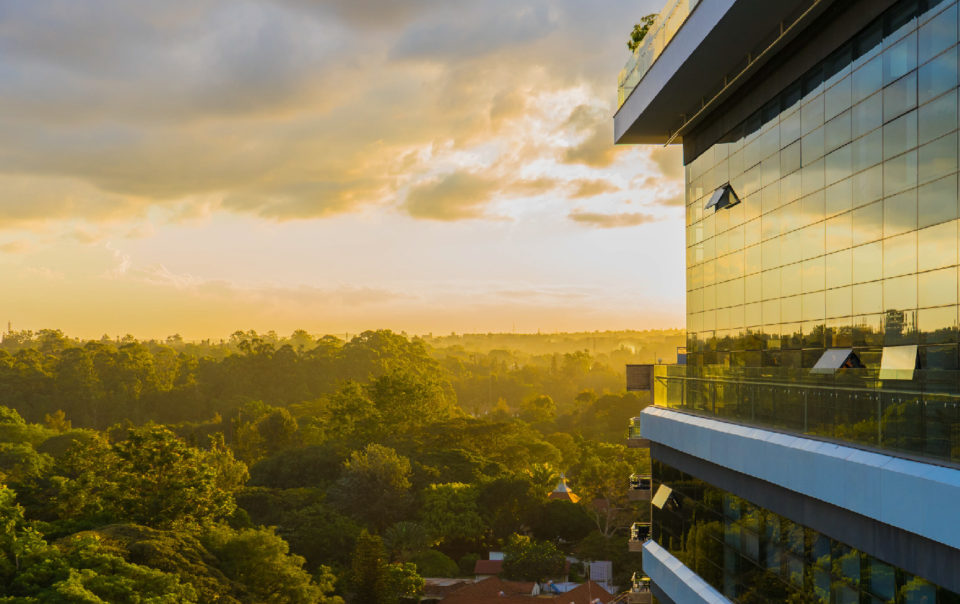
As Published on the Business Daily, Friday October 31, 2025
What KOFISI Art Gallery has done is breathe life into spaces that would normally be considered stiff because of their corporate nature. Its first show, dubbed Force Field, is perhaps the exhibition of the year. Few exhibitions have come close in terms of the quality and quantity of work that was on display in an unfinished section of a burgeoning highrise corporate-setting office apartment. The second exhibition in the same space is smaller, quainter, and is composed of a collage of works that are fragments of the same mirror.
The artworks are from Seven Artists Collective and an interlinked collage of stories told through visual art in varied styles. It is an art showcase that invites reflection and inflection in the pursuit of meaning and evokes dialogue across generations, mediums and ideas told in the language of the artists who include; Onyis Martin, Onesmus Okamar, Deng Chol, Lemek Sompoika, David Thuku, Rasto Cyprian, Taabu Munyoki, Paul Njihia, Nadia Wanjiru, and Maori Wasike. For David art has been a fundamental part of his upbringing. He recalls childhood as littered with memories of being beaten numerous times for drawing when he should have been studying.
He, however, credits his family for understanding the importance of art to him and encouraging him to pursue it. He comes from the crop of artists who honed their craft at the Buruburu Institute of Fine Arts (BIFA) but for an artist who has had 10 years of full-time professional practice he has never worked individually, his craft has always involved working around a group of artists, a pack mentality habit that he isn’t niggly about sharing. “I have worked under three collectives so far, one in Buruburu, another at Kuona Trust, and currently I am working with Seven Collective. Working under collectives has built my career because an artist never works in a vacuum, they need inspiration from different things but mostly, from fellow artists,” he says. Whereas he studied as a painter, time has seen David evolve in a different direction.
“I haven’t painted for a while. I like mixing materials and rarely will you ever find me sticking to one material. It was during this process that I ended up focusing on paper trying different styles until I found one which defines me. My technique is more or less one of paper collage where I study papers. I try pushing every parchment of paper I encounter to be able to learn its limits. My style is one where I marry different techniques, layering them over each other to come up with a complete body of works, a style they call graffito,” he says.
What separates Middle Ground from the other groups shows is the existence of a pattern in the showcased works, it is not a walk-in show whereby artists just submit work without consideration of the overlying theme. The artist Middle Ground having worked together before exhibit a seamless sync between their varied works on display in a sense that would be considered as telepathic. “Each of the works on display was considered with the larger body of works in mind. Each piece was picked with the purpose of complementing the next piece, everyone has a different style and story but if you look keenly, they all fit into the bigger narrative,” says David. Middle Ground suggests a consensus and mix of resources, intellect, and perspective from the viewpoint of the artists. It merges different styles and technique into a collective tale. For some like David and Wasike, their works dally around movement and spaces,
Njihia’s as well as Onesmus’ work parleys with characters and figures as does Taabu’s which pays homage to women and their salon spaces. In the latter three, the notable recurring theme dances around issues of identity. Lemek’s work inasmuch as it addresses cultural issues inclines itself toward telling the history of a culture which plays into the picture of movement patterns and identity. Rasto moves about through nature in his work whereas Deng’, who hails from Sudan, fancies patterns and abstract characters. Patterns repeat themselves ‘Mishoni Salon’ acrylic paint artwork on canvas by Taabu Munyoki. in most of the portraits and for David, who lauds himself as a translator of patterns, they signify belonging.
The more one repeats something, they more they become. It is Nadia Wanjiru’s work however that sticks out for me. It is bold, loud, red and with an impressive almost minimalistic concept of patterns sprinkled reservedly in her canvas spaces that complete the full picture. Nadia’s use of larger-than-life figures with a backdrop of a dull sharp red creates an image that evokes varied emotions,
Her figures carry emotions of their own and in a sense create impressions that are both relaxed but still profound. Taabu pays homage to the woman, space and crown in a series of hair themed portraits. She honours a woman’s crown — her hair — and the salon, her sacrosanct space, the throne in which this crown is polished with movements of grace and purpose. Her portraits pay homage to femininity in a way that relates deeply to the African culture. Middle Ground is being showcased in Westlands and the exhibition runs until December 11, 2025.
KOFISI Africa
© 2025 KOFISI Hospitality Group



